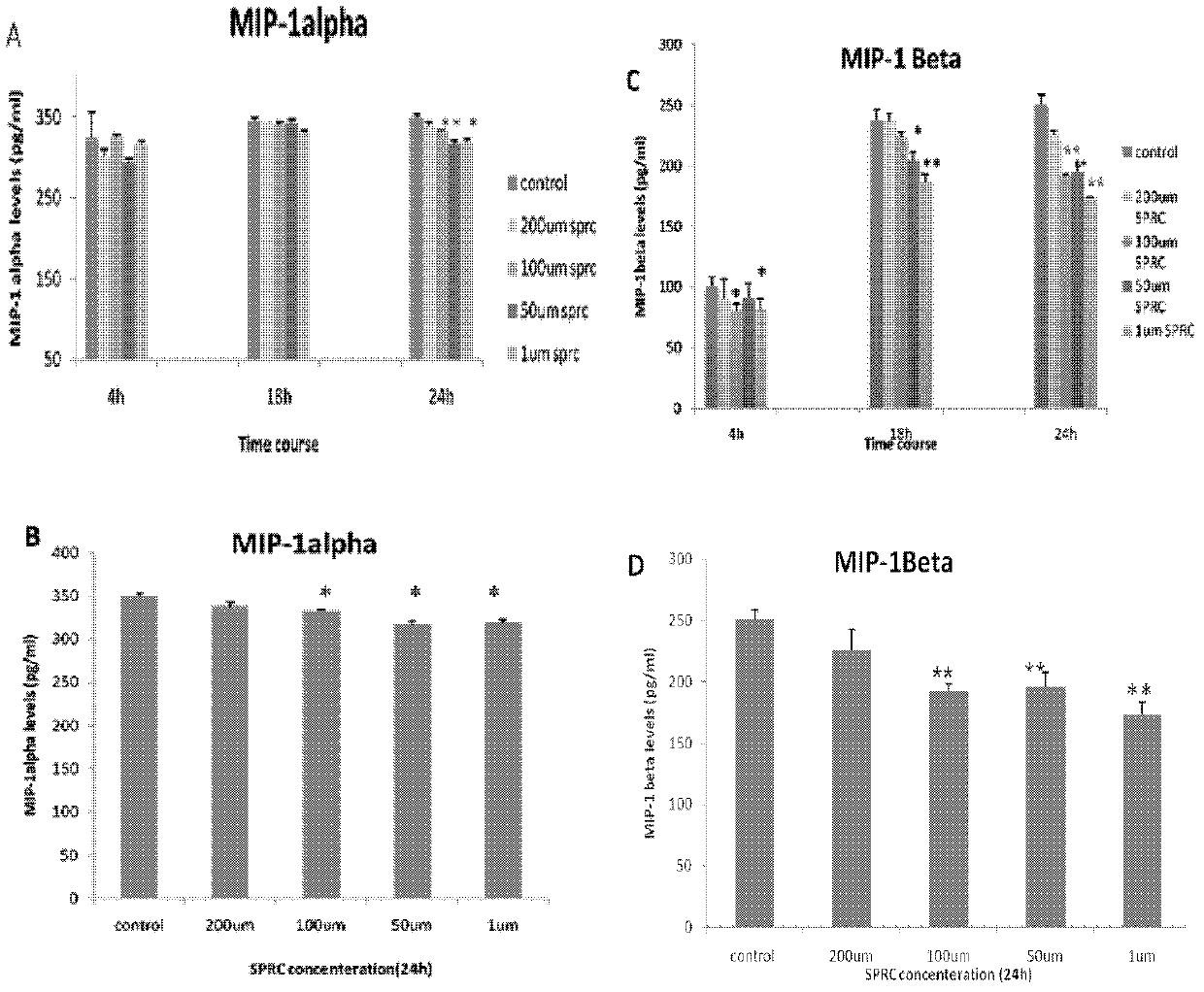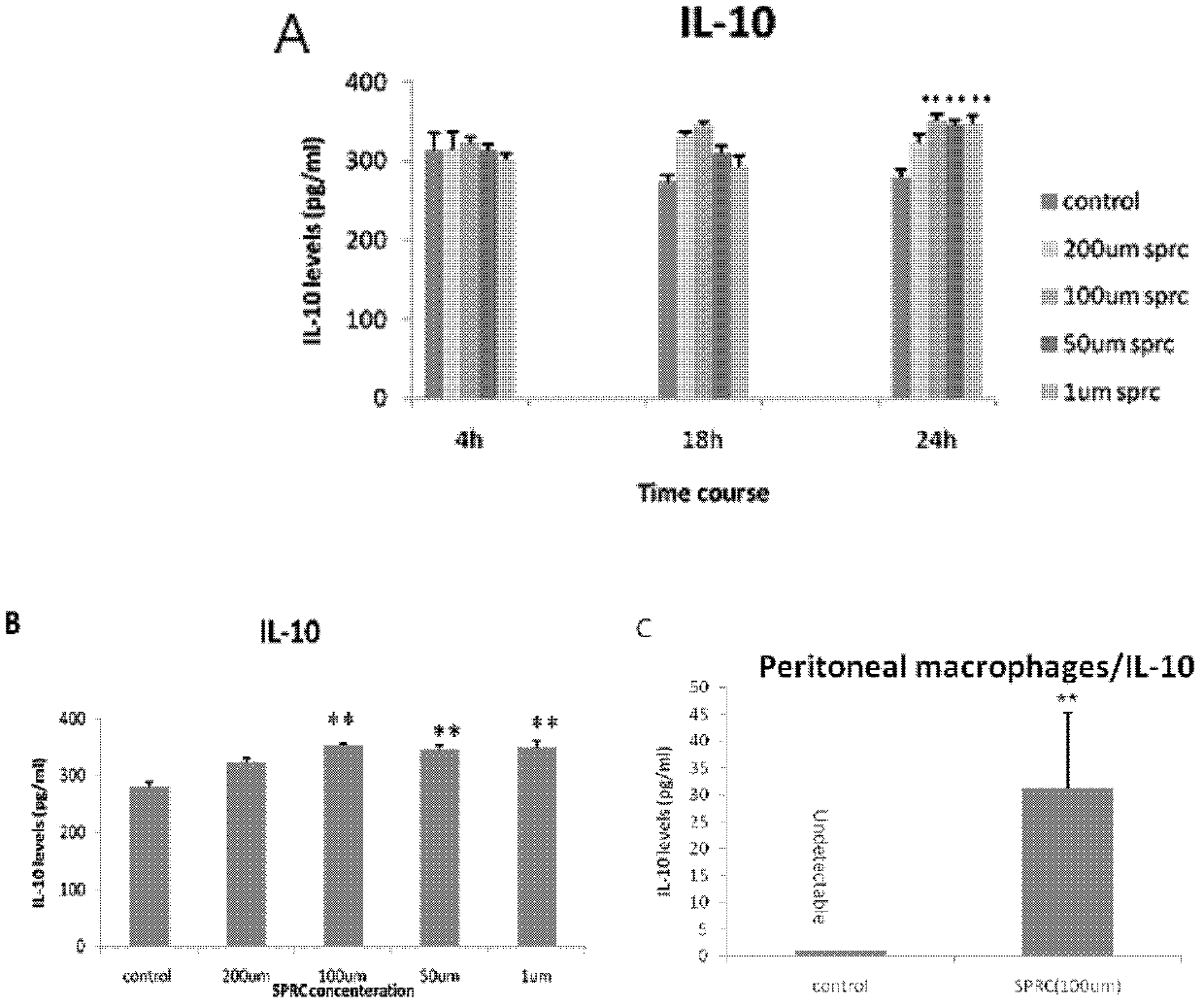Use of propargyl cysteine and analogue thereof in preparation of drug for treating immunity-related inflammation diseases
A cysteine, inflammatory disease technology, used in drug combinations, allergic diseases, antipyretics, etc., can solve problems such as related diseases that have not yet been seen
- Summary
- Abstract
- Description
- Claims
- Application Information
AI Technical Summary
Problems solved by technology
Method used
Image
Examples
Embodiment 1
[0045] The effect of SPRC on the release of chemokines from mouse peritoneal macrophages and mouse RAW264.7 macrophages
[0046] ①H 2 Effect of S Donor SPRC on the Release of Inflammatory / Inducible Chemokines from Mouse Macrophages
[0047] Through the study of primary macrophages and mouse RAW264.7 macrophages, different concentrations of SPRC (1μM, 50μM, 100μM, 200μM) were cultured for different times, supernatants were collected at different time points, and MIP was detected by ELISA -1α and MIP-1β levels; With the prolongation of culture time, the levels of MIP-1α and MIP-1β released by resting cells increased continuously, indicating that these chemokines are spontaneously secreted, and SPRC can be dose- and time-dependent. Inhibition of MIP-1α and MIP-1β secretion.
[0048] The results showed that SPRC could significantly inhibit the spontaneous secretion of MIP-1α and MIP-1β from RAW264.7 macrophages;
[0049] ②The effect of SPRC on the release of chemokines from pri...
Embodiment 2
[0053] Effects of SPRC on cytokine release from mouse peritoneal macrophages and mouse RAW264.7 macrophages
[0054] Based on the results of the above-mentioned Example 1, whether SPRC affects the release of pro-inflammatory cytokines and anti-inflammatory cytokines is detected; the results show that different depths of SPRC (1 μM, 50 μM, 100 μM, 200 μM) cultivate RAW264. 18h, 24h), TNF-α, IL-1β, IL-6 and IL-10 levels in the supernatant were measured by ELISA; SPRC (1μM, 50μM, 100μM) can promote the secretion of IL-10 in a time-dependent manner (such as image 3 A, B shown); SPRC (100μM) can significantly promote IL-10 (as shown in image 3 C) and IL-6 (as Figure 4 A) release, while SPRC (1 μM, 50 μM, 100 μM, 200 μM) can significantly reduce the secretion of TNF-α and IL-1β.
Embodiment 3
[0055] Embodiment 3SPRC improves mouse RAW264.7 macrophage STAT-3 transcriptional activity
[0056] By detecting the effects of transcription factors NF-κB, STAT-3 and AP-1 on the release of cytokines and chemokines by SPRC, the results showed that SPRC (1μM, 50μM, 100μM, 200μM) was cultured with RAW264.7 cells for 24h, extracted Nucleoprotein DNA binding experiments showed that SPRC (100 μM) could significantly increase the transcriptional activity of STAT3, but had no effect on the transcriptional activities of NF-κB and AP-1 (such as Figure 6 A, B, C shown).
PUM
 Login to View More
Login to View More Abstract
Description
Claims
Application Information
 Login to View More
Login to View More - R&D Engineer
- R&D Manager
- IP Professional
- Industry Leading Data Capabilities
- Powerful AI technology
- Patent DNA Extraction
Browse by: Latest US Patents, China's latest patents, Technical Efficacy Thesaurus, Application Domain, Technology Topic, Popular Technical Reports.
© 2024 PatSnap. All rights reserved.Legal|Privacy policy|Modern Slavery Act Transparency Statement|Sitemap|About US| Contact US: help@patsnap.com










